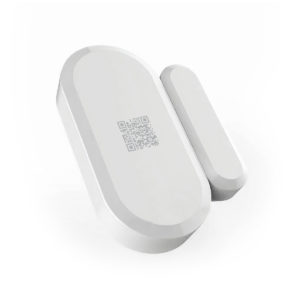
Cold Chain
Maintaining the integrity of temperature-sensitive products is paramount in the pharmaceutical and agriculture sectors. The cold, temperature-controlled supply chain ensures these products remain effective and safe from production to consumption. Monitoring refrigeration doors is a crucial yet overlooked aspect of maintaining an effective cold chain. Properly managing these doors is critical to avoid product damage, save energy, and reduce operational costs.

The Vulnerability of Temperature-Sensitive Products
Both pharmaceutical and agricultural products are highly susceptible to temperature fluctuations. Pharmaceuticals, such as vaccines, biologics, and certain medications, require strict temperature control to maintain efficacy and safety. Any deviation from the range of temperature needed can render these products ineffective or even dangerous. Similarly, you must keep fresh produce, dairy products, and other perishable agricultural goods at specific temperatures to prevent spoilage and maintain quality.
The Role of Refrigeration Doors
Refrigeration doors are the gateways that connect the controlled environment inside the cold storage units to the outside world. Every time someone opens a door, air exchanges and causes temperature fluctuations. Leaving these doors open or not sealing them properly can cause significant temperature deviations, compromising the integrity of the stored products. Additionally, frequent or prolonged door openings can lead to increased energy consumption as the refrigeration units work harder to restore and maintain the desired temperature.
Avoiding Product Damage
Monitoring refrigeration doors is critical to avoiding product damage in several ways:
- Temperature Stability: Continuous monitoring ensures doors are closed properly, preventing unwanted temperature fluctuations. This stability is crucial for maintaining the efficacy of pharmaceuticals and the freshness of agricultural products.
- Alarm Systems: The iMatrix Cloud System constantly monitors and can trigger alarms when doors are left open for too long. It will detect significant temperature deviation when combined with iMatrix NEO temperature sensors. This immediate feedback allows for quick corrective actions, minimizing the risk of product damage.
- Data Logging: The iMatrix Cloud system logs data on door openings and temperature changes. This information is valuable for audits, regulatory compliance, and identifying patterns that might indicate operational inefficiencies.

Avoiding Product Damage
Monitoring refrigeration doors is critical to avoiding product damage in several ways:
- Temperature Stability: Continuous monitoring ensures doors are closed properly, preventing unwanted temperature fluctuations. This stability is crucial for maintaining the efficacy of pharmaceuticals and the freshness of agricultural products.
- Alarm Systems: The iMatrix Cloud System constantly monitors and can trigger alarms when doors are left open for too long. It will detect significant temperature deviation when combined with iMatrix NEO temperature sensors. This immediate feedback allows for quick corrective actions, minimizing the risk of product damage.
- Data Logging: The iMatrix Cloud system logs data on door openings and temperature changes. This information is valuable for audits, regulatory compliance, and identifying patterns that might indicate operational inefficiencies.
Energy Efficiency and Cost Savings
Effective door monitoring can lead to substantial energy savings and cost reductions:
- Reduced Energy Consumption: By ensuring doors are not left open unnecessarily, refrigeration units do not have to work overtime to restore the desired temperature. This reduces energy consumption and prolongs the lifespan of the equipment.
- Optimized Operations: Monitoring data can help identify peak times for door openings, allowing for better planning and operational adjustments. For example, scheduling restocking during off-peak hours can reduce the frequency of door openings.
- Preventative Maintenance: Continuous monitoring can alert to faulty door seals or malfunctioning hinges. This allows for timely maintenance before these problems lead to significant energy losses or equipment failures.

Implementing Effective Monitoring Solutions
To effectively monitor refrigeration doors, one can employ several technologies and practices:
- Door Sensors: Installing sensors that detect when doors are opened or closed can provide real-time data on door usage. These sensors can be integrated with the refrigeration system to adjust cooling operations accordingly.
- Temperature Sensors: Placing iMatrix NEO temperature sensors inside the storage units can help monitor fluctuations and maintain the desired temperature consistently.
- Alarm Systems: Setting up alarm notifications for prolonged door openings or temperature deviations can prompt immediate action to rectify the issue.
- Data Analytics: Utilizing data analytics to analyze patterns of indoor usage and temperature changes can help optimize operations and improve energy efficiency.
Conclusion
Monitoring refrigeration doors is crucial in the pharmaceutical and agricultural cold chains. Proper management of these doors is essential to maintaining the quality and safety of temperature-sensitive products, preventing costly damage, and optimizing energy usage. By investing in advanced monitoring technologies and adopting best practices, companies can enhance the reliability and efficiency of their cold chain operations, ensuring that their products reach consumers in the best possible condition.